► 2020 Hilux with 2.8-litre engine
► Massive upgrade on the old 2.4
► Now better on and off-road
The Toyota Hilux is a long-established legend of the pick-up truck world. Since Toyota launched it in 1968 it has shifted more than 18 million of them. But while the eight generations of Hilux have done many things really well over the years, it hasn’t always got everything right.
For when the latest Toyota Hilux arrived in western Europe in 2016, it overlooked the ever-more-important lifestyle sector of the market. These buyers don’t just want fancy cabins and visual upgrades these days, they want powerful engines too. And Toyota is up against rivals that do all that very well these days – the Land Rover Defender and Ford Ranger Raptor are aimed squarely at that lifestyle market.
The arrival of a 2.8-litre diesel engine in late 2020 sought to right this wrong. Until late 2020, the current Toyota Hilux was only available with a single 2.4-litre turbodiesel engine option, producing just 148bhp. To put this problem into perspective, 70% of the UK pick-up market in 2019 went to trucks with at least 175bhp – and that ‘at least’ covers many rivals pushing well over 200bhp.
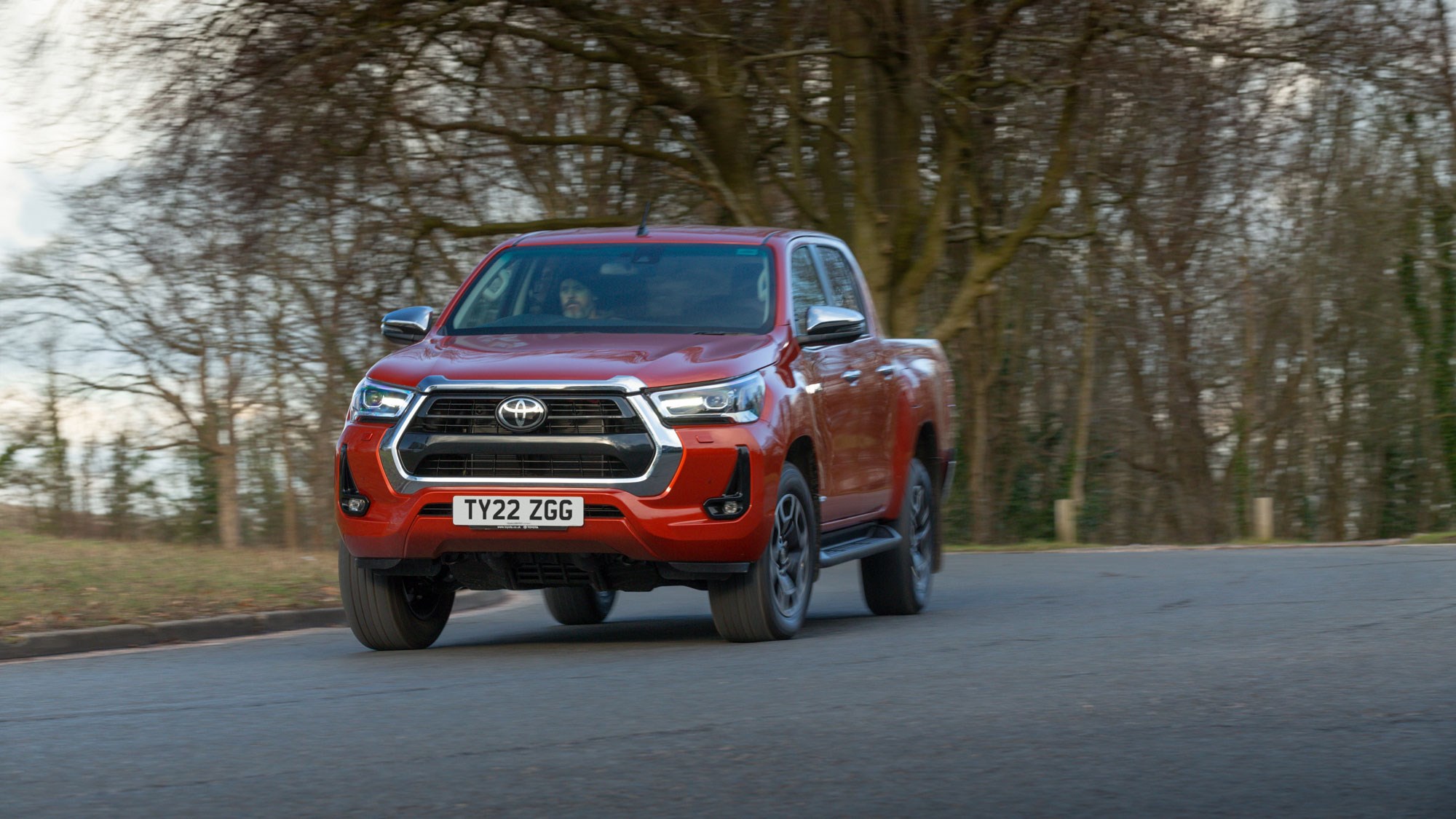
This major 2020 sees the empire strike back. Rounding out what was a somewhat extraordinary 2020 for Toyota, the heavily updated Hilux is better on-road, better off-road (where it was hardly shabby anyway) and better equipped, benefits from overhauled looks, and now offers the largest – if not quite the most powerful – engine of any new pick-up available in the UK. Come 2022 and there are a few more updates, but these are restricted to the spec and the software – more on that below.
So, whether you want one for work or strapping a surfboard to the back, the Toyota Hilux has substantially upped its game.
How much of difference does the new engine really make?
The new 2.8D – which is a re-engineered version of a motor that was already available in other regions – packs a mere four cylinders, but with 201bhp it’s over a third more powerful than the 2.4D. Torque, meanwhile, has increased from 295lb ft to as much as 369lb ft where the six-speed automatic transmission is fitted; the six-speed manual is limited to 310lb ft, but we’d suggest the auto is worth the extra even without this.
That’s enough extra muscle to knock 2.7 seconds off the fastest 0-62mph time. And although the resulting 10.1sec sprint (10.7sec for the smooth-shifting auto) is a long way off the seven-something best a VW Amarok or Mercedes X-Class could muster, both of those V6-powered beasties found themselves on the wrong end of a CO2-balancing equation in 2020 and have quietly gone to their graves.
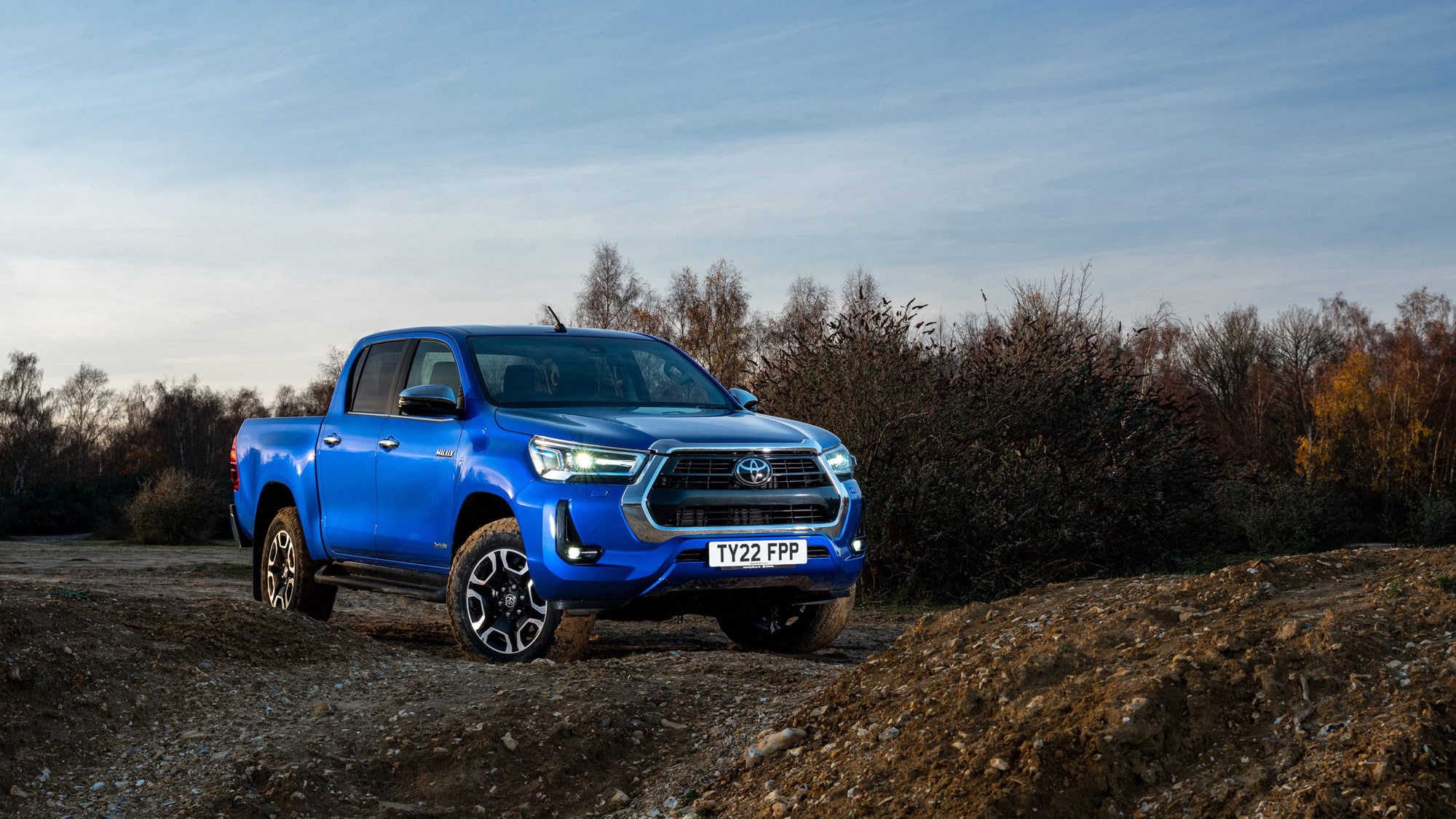
The Hilux 2.8, by contrast, outperforms the 2.4 in the economy stakes. Be warned: its best remains an eye-watering 33.2mpg and 224g/km, even when treading as lightly as possible.
For pick-up buyers, who are probably already resigned to putting plenty of fuel in (and paying tax at cost-effective flat-rate light commercial vehicle levels…), the important thing here is that you no longer feel like you’re dicing with death on shorter slip roads.
Indeed, the Toyota Hilux is now fast enough that you occasionally find yourself squirming as much as the chassis should you need to get deep into the brakes, which could, perhaps, be a little more decisive – especially for a vehicle legally able to carry over a tonne in the load bed.
But you said it’s now better on the road?
Toyota has always placed its emphasis on toughness, which has meant tuning the suspension – especially the rear suspension – with payload at max. This, as you can imagine, hasn’t done wonders for unladen ride quality.
If you’re a builder or a farmer, you might not like this but you certainly expect it. And to be perfectly frank, the Hilux-as-was still out-rode most of the competition – including those trucks that came with ‘car-like’ coil springs at the back instead of the simple-but-strong traditional leaf-spring arrangement Toyota uses for durability.
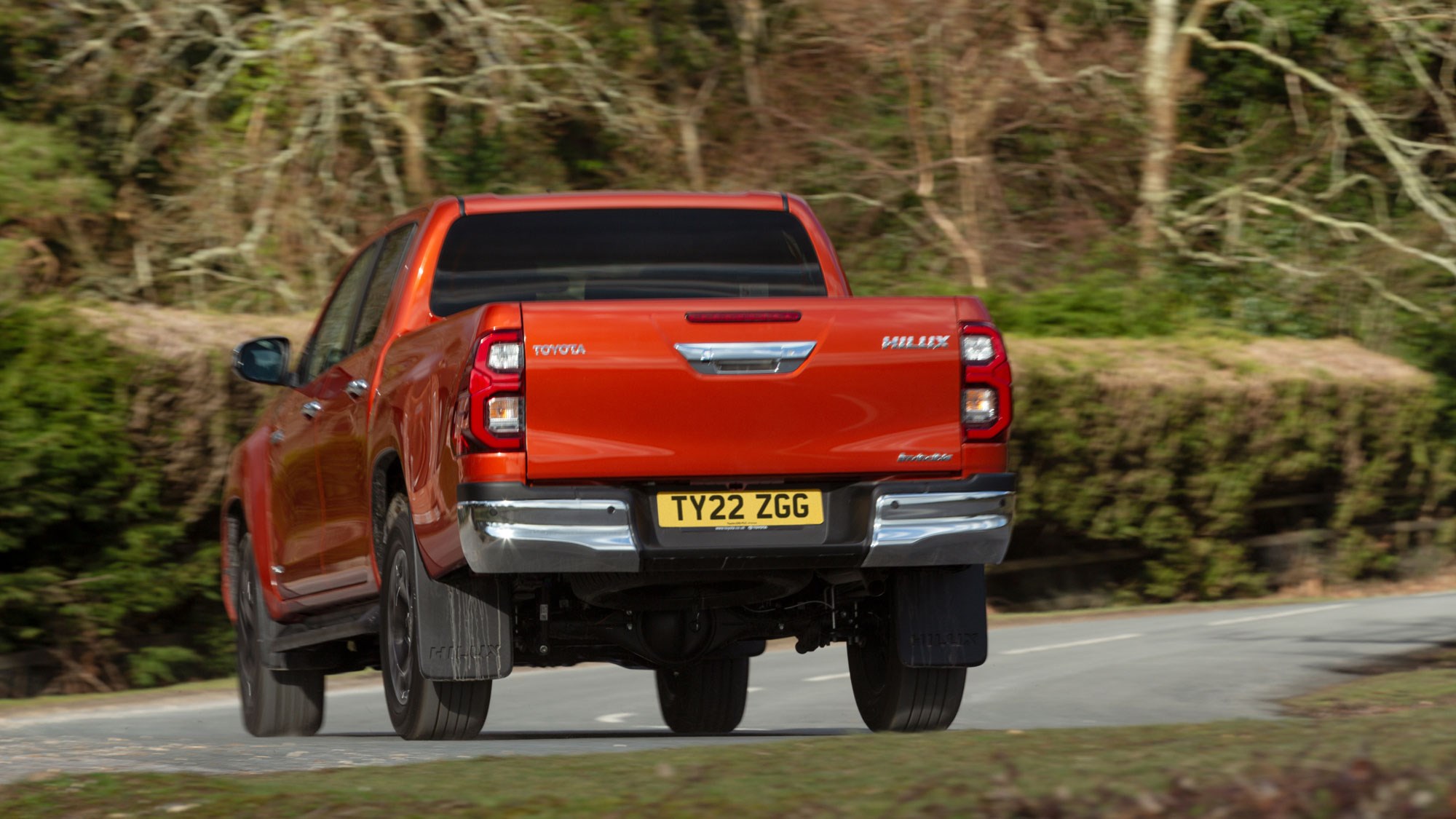
Things become more complicated when the lifestyle sector gets involved. These customers are buying pick-ups not just as a tax dodge but as an alternative to an SUV, so have slightly higher expectations when it comes to comfort and convenience.
Loading a pick-up full of creature comforts is easy enough – and Toyota has upped the ante here as well with an all-new and much improved infotainment system; making it SUV-like to drive is somewhat more difficult. The old Amarok came closest, and the Ford Ranger is now pretty impressive. So what have Toyota’s engineers managed to do this time around?
Well, for starters, they’ve tuned the suspension before fully loading it – a process that’s involved changing the shock absorbers, refining those leaf springs and swapping some bushes. This has taken more of the harshness out of progress over bad road surfaces, making the overall experience much more acceptable to regular car drivers, even if there is still a certain vibrating fidgetiness to the way the Hilux responds to bumps and ruts. Supposedly this hasn’t compromised its load-carrying capability.
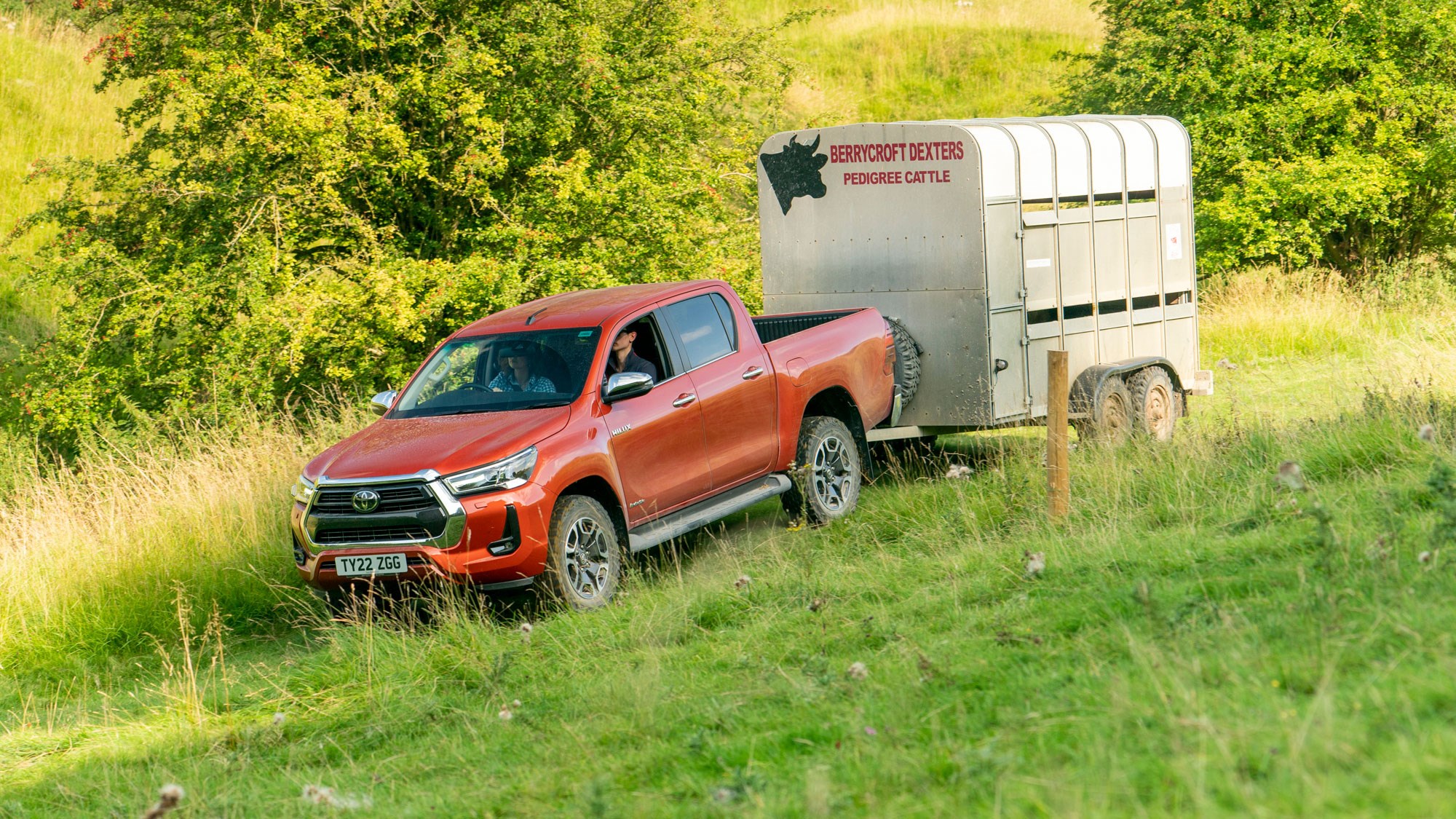
The steering is better, too, thanks to a new ‘variable flow control’ pump that manages to be light and feelsome (relatively speaking – this isn’t a Lotus) at low speeds yet steady and predictable when travelling faster on A-roads and motorways. A new limited slip diff as standard on all but the base model means better traction in low-grip situations in rear-wheel drive mode, too.
It’s a genuinely nice improvement. But we strongly suspect you wouldn’t need to be the keenest of drivers to tell the difference between this and a Toyota Land Cruiser in a blind test.
Has this knackered its off-road capability?
Quite the contrary, Toyota’s made further efforts to improve this as well. This is real detail stuff – lowering the idle speed from 850rpm to 680rpm and retuning the accelerator response when switched to low-range four-wheel drive (L4), all in the name of finessing off-road control.
The VSC has also been upgraded, and a tyre angle monitor added to help you keep track of where the front wheels are pointed. A proper 700mm of wading depth and a quite remarkable amount of rear axle articulation therefore means this Hilux will go places most owners would actually fear to tread.
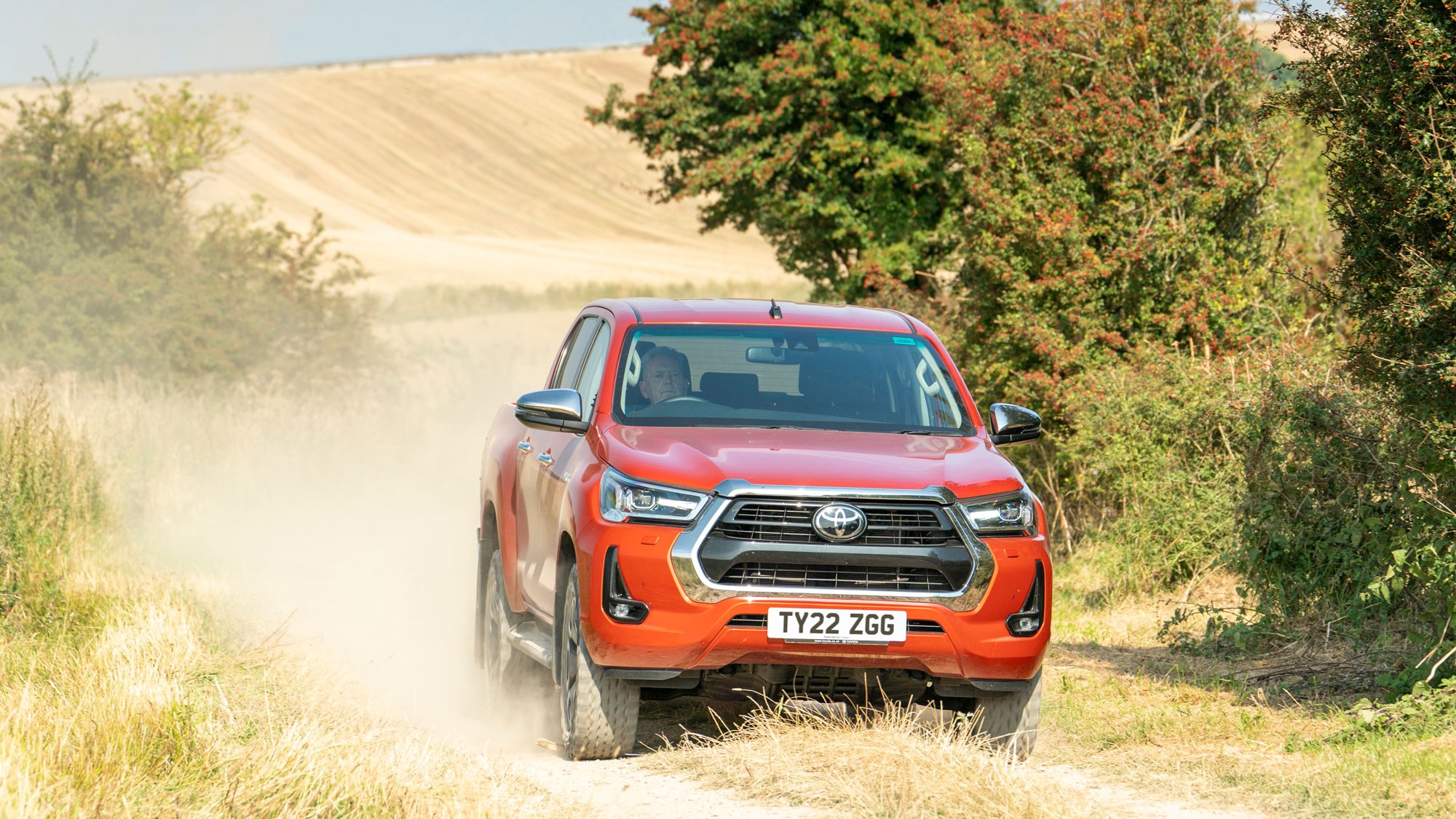
And we mean that sincerely. Over an hour of probably the most authentic UK off-roading we’ve ever experienced on a launch event, the Hilux calmly waded through rivers and bogs, navigated narrow forest tracks and descended slick slopes without once appearing to lose its footing – let alone anything else.
There is no way we would have driven a standard production vehicle – on standard road tyres – down most of these routes if we hadn’t been following the instructor and site owner. A long-standing, committed off-road enthusiast, he professed himself particularly impressed with the rear-axle articulation, given the leaf springs. Look at the pictures, and you’ll see why.
Off-road, within its apparently high limits, the Toyota Hilux is basically unflappable.
What about trim levels and standard kit?
Hilux trim levels are the same as they were: Active, Icon, Invincible and Invincible X, each with more equipment added. Top of the pile Invincible and Invincible X are the only models available with the 2.8D (standard on the X, optional on the other), with the X also getting a host of bespoke bodywork features.
All are stuffed with kit, though unless you really need nothing more than a tool, Icon is the grade to start at, as this gets the new 8.0-inch Toyota Touch 2 infotainment system and the active LSD, as well as a reversing camera. Invincible adds heated seats, bigger 18-inch alloys, keyless go and parking sensors front and rear.
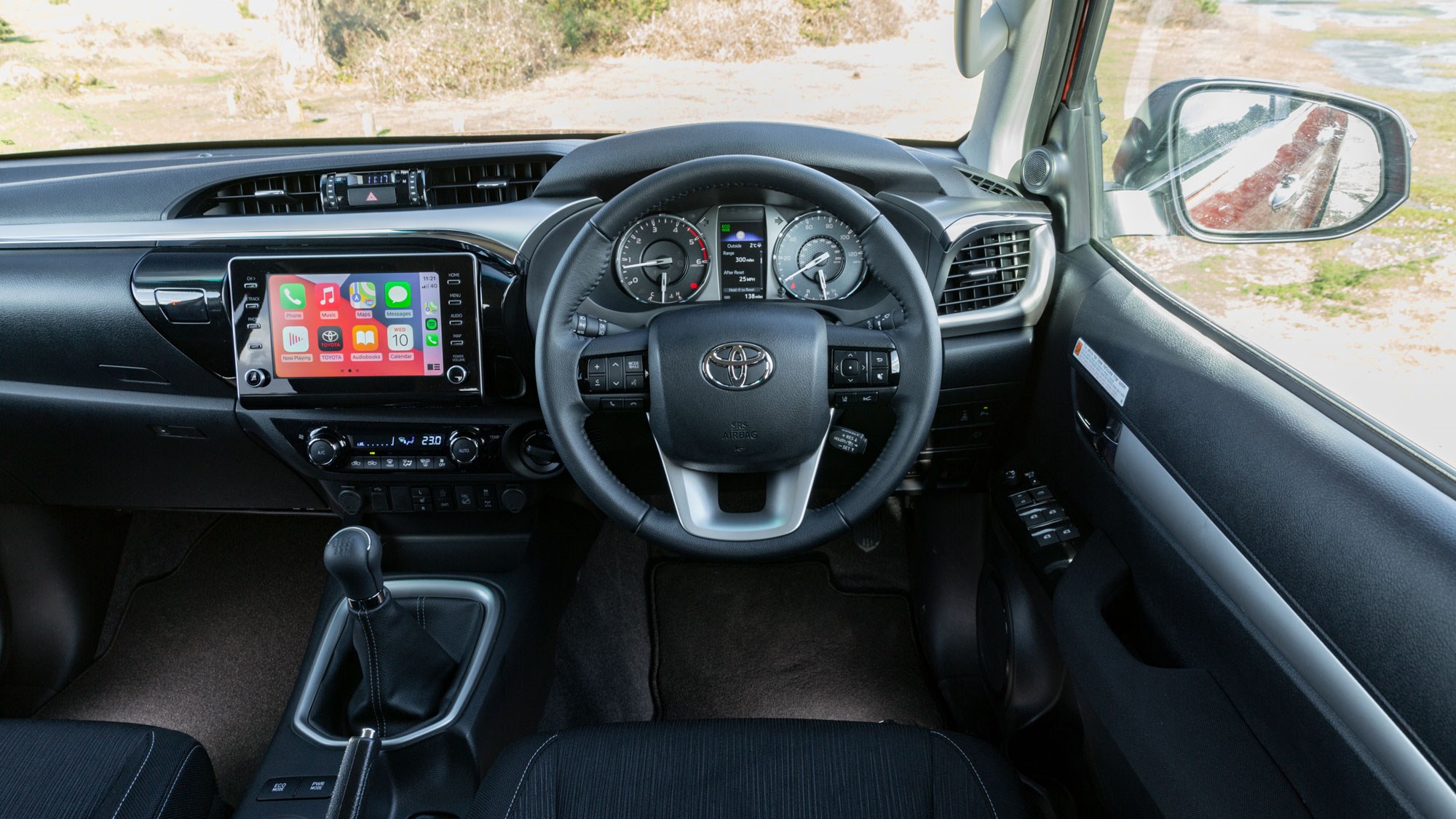
Only the Invincible X gets sat-nav as standard, alongside a new nine-speaker JBL sound system, ambient interior lighting, two-tone perforated leather and a specific Invincible X key.
It’s worth noting that pricing for the 2.8D is very aggressive – the upgrade is presently less than £300 on the Invincible model.
As for generally interior quality, the Hilux feels built to last more than built to seduce, but this seems about right for a pick-up, and it’s one of the plushest out there now. The design is more modern life than working life, yet retains substantive ease of use – with chunky controls and a good balance between physical buttons and touchscreen activity.
We’re still not sure about the ‘stitched’ plastic dashtop, however. And with only limited reach-adjustment in the steering wheel it may not be easy to find your ideal driving position. ‘Limited’ is better than none, which is what you get in many rivals, including the now dead X-Class.
The 2022 update is far from comprehensive enough to be classified as a facelift (there are no visual or technical changes for example) but there are a few notable additions to the equipment list. Some of these are real blink-and-you-miss-it things, like the fact that the Invincible and Invincible X both get dual-zone air conditioning and an auto-dimming rear mirror, but a couple of others might be a bit handier.
The Panoramic View Monitor (a 360-degree camera that gives you a birds’ eye view of the vehicle) is useful for parking a big pick-up that could be sporting a hard top that makes rear visibility tricky, but it has another handy application too. Pop the camera on while you’re off roading and it will help you spot any lurking rocks or obstacles that could do damage to the underneath or doors. Useful. Sadly it is only Invincible X models that get it – lower trims will have to wear said damage with pride.
Summer 2022 also brings about a version even more geared towards the lifestyle buyer – the GR Sport. This brings more than just a couple of visual changes – think a black front grille with big TOYOTA lettering, wheelarch extenders, touches of red detailing and carbon fibre on the inside and plenty of GR logos – as it also gets upgraded suspension. We’re yet to try this version but Toyota says it has stiffer front springs and new ‘monotube’ shock absorbers. We’ll let you know how it all fits together when we have a go.
Toyota Hilux: verdict
If you’re a private buyer serious about a brand new pick-up at this point in time, there are two we would consider – this Hilux, and the Ford Ranger.
The Ford offers more power from its latest 2.0-litre BiTurbo engine and just as much torque, and maintains a slight edge when it comes to on-road behaviour – the Ranger Wildtrak is about as convincing an SUV-alternative you’re going to find in this market.
But the new 2.8-litre Hilux runs it very close, is outstanding off-road, and – if we can offer some boring consumer advice – comes with a warranty that lasts up to 10 years to underline Toyota’s reputation for reliability. It’s a very, very convincing package.
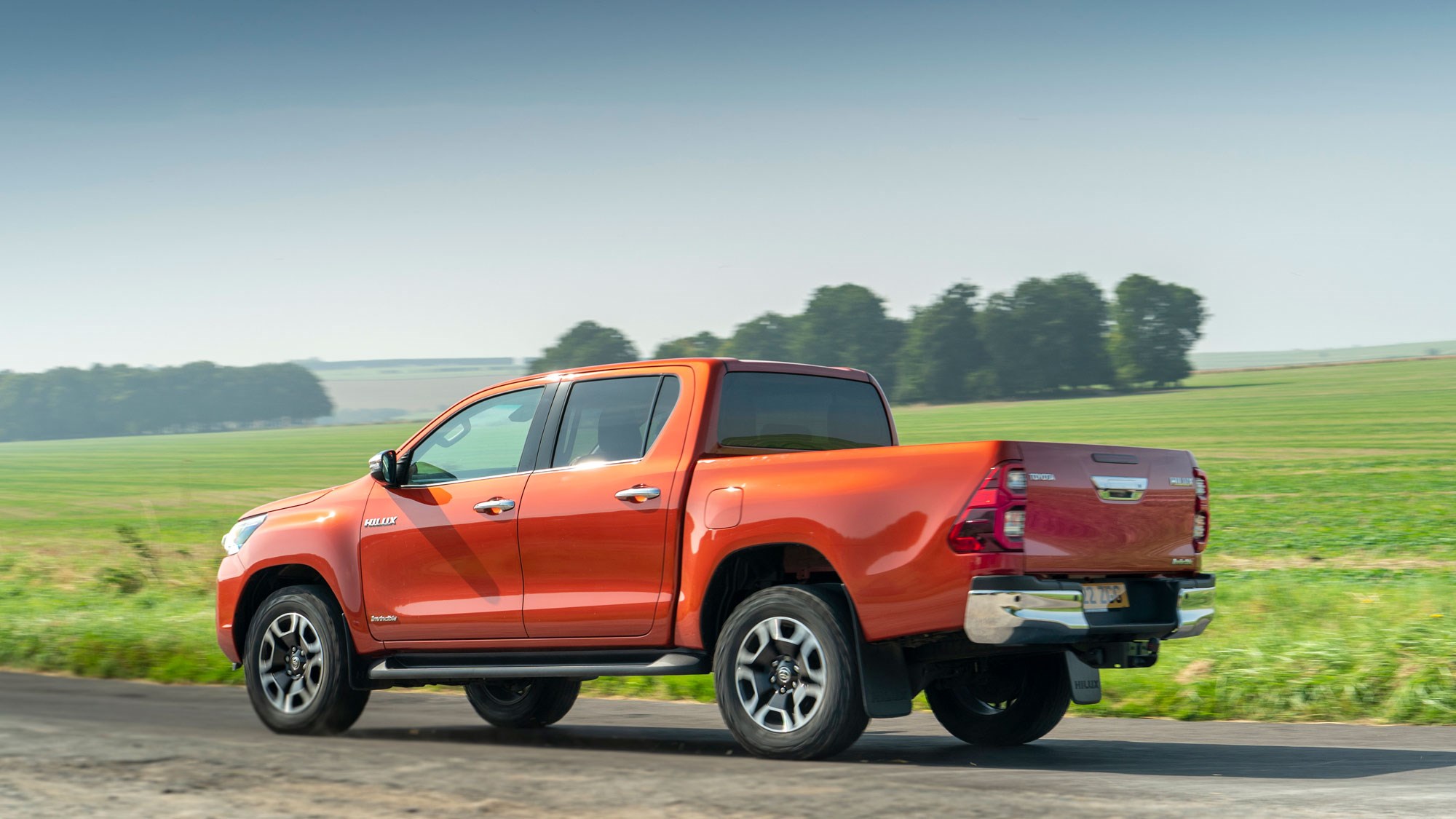
Read an even more detailed review of the new Hilux on Parkers